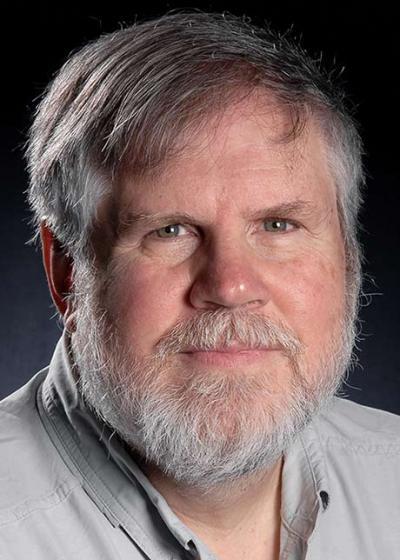

A new Google for India Digitization Fund, announced by Sundar Pichai, CEO of Google and Alphabet, will invest approximately $10 billion into India over the next 5-7 years. more
 The media is filled with hyperbolic claims that "Our network is the fastest!" And there are many so-called "Speed Test" tools available on the Internet. Most are easily run in a web browser. Should you trust those tools? Not really. The popular speed testing tools provide a very narrow and limited measure of network "speed." It is quite possible that a network that is rated as "fast" could actually deliver poor results to many applications. Why is this so? more
The media is filled with hyperbolic claims that "Our network is the fastest!" And there are many so-called "Speed Test" tools available on the Internet. Most are easily run in a web browser. Should you trust those tools? Not really. The popular speed testing tools provide a very narrow and limited measure of network "speed." It is quite possible that a network that is rated as "fast" could actually deliver poor results to many applications. Why is this so? more
 Something has been bothering me for several months, and that usually manifests in a blog at some point. During the COVID-19 crisis, the FCC and big ISPs have repeatedly said that the only reason our networks weathered the increased traffic during the pandemic was due to the FCC's repeal of net neutrality and deregulation of the broadband industry. Nothing could be further from the truth. more
Something has been bothering me for several months, and that usually manifests in a blog at some point. During the COVID-19 crisis, the FCC and big ISPs have repeatedly said that the only reason our networks weathered the increased traffic during the pandemic was due to the FCC's repeal of net neutrality and deregulation of the broadband industry. Nothing could be further from the truth. more
Alphabet's Loon on Monday announced that its high-altitude balloons are now providing internet service in Kenya to subscribers of Telkom Kenya. more
 As we approach four months since the WHO declared COVID-19 to be a pandemic, and with lockdowns and other restrictions continuing in much of the world, it is worth reflecting on how the Internet has coped with the changes in its use, and on what lessons we can learn from these for the future of the network. The people and companies that build and operate the Internet are always planning for more growth in Internet traffic. more
As we approach four months since the WHO declared COVID-19 to be a pandemic, and with lockdowns and other restrictions continuing in much of the world, it is worth reflecting on how the Internet has coped with the changes in its use, and on what lessons we can learn from these for the future of the network. The people and companies that build and operate the Internet are always planning for more growth in Internet traffic. more
 Since its founding, Amazon has reinvested profit in building infrastructure. They began with retail sales and distribution infrastructure and later added Amazon Web Services (AWS), providing data center and hosting infrastructure. Amazon founder Jeff Bezos also established Blue Origin, a company to provide satellite launch service and eventually to support space travel. Last year Amazon filed an application for a 3,236-satellite constellation of low-earth orbit Internet service satellites - Project Kuiper. more
Since its founding, Amazon has reinvested profit in building infrastructure. They began with retail sales and distribution infrastructure and later added Amazon Web Services (AWS), providing data center and hosting infrastructure. Amazon founder Jeff Bezos also established Blue Origin, a company to provide satellite launch service and eventually to support space travel. Last year Amazon filed an application for a 3,236-satellite constellation of low-earth orbit Internet service satellites - Project Kuiper. more
 The Starlink Web site says, "Starlink is targeting service in the Northern U.S. and Canada in 2020, rapidly expanding to near-global coverage of the populated world by 2021," but the rollout will not be uniform. The initial coverage will be centered around 53 degrees latitude, and locations with unobstructed views of the sky will have an advantage. Like many folks, I wonder about coverage at my particular location in a wooded mountain area at 34.8462° N latitude. more
The Starlink Web site says, "Starlink is targeting service in the Northern U.S. and Canada in 2020, rapidly expanding to near-global coverage of the populated world by 2021," but the rollout will not be uniform. The initial coverage will be centered around 53 degrees latitude, and locations with unobstructed views of the sky will have an advantage. Like many folks, I wonder about coverage at my particular location in a wooded mountain area at 34.8462° N latitude. more
 At NANOG 79 earlier this month Craig Labowitz from Nokia Deepfield presented on the impact on the COVID-19 pandemic on Internet use. The approach to the analysis used real-time streaming telemetry from Communication Service Provider (CSP) backbone and aggregation routers, and the data analysis covered content provider networks in North America, Europe and parts of Asia. more
At NANOG 79 earlier this month Craig Labowitz from Nokia Deepfield presented on the impact on the COVID-19 pandemic on Internet use. The approach to the analysis used real-time streaming telemetry from Communication Service Provider (CSP) backbone and aggregation routers, and the data analysis covered content provider networks in North America, Europe and parts of Asia. more
 I've had a number of people ask me about how I think COVID-19 will impact the ISP industry over the next six months. It's an interesting question to consider because there are both positive and negative trends that ISPs need to be concerned about. The chances are that these various trends will affect markets and ISPs differently - making it that much harder for an individual ISP to understand what they are going to see over the next six months. more
I've had a number of people ask me about how I think COVID-19 will impact the ISP industry over the next six months. It's an interesting question to consider because there are both positive and negative trends that ISPs need to be concerned about. The chances are that these various trends will affect markets and ISPs differently - making it that much harder for an individual ISP to understand what they are going to see over the next six months. more
FCC has cast serious doubts about the capability of low-Earth orbit (LEO) satellite operators, such as SpaceX's Starlink, to provide low-latency broadband and thus their eligibility to bid. more
 Nokia Deepfield is another company that works in the background on the web, and that analyzes data traffic patterns for the big ISPs. Their June 4 report on web traffic reports about the same thing we're hearing from most large ISPs -- the volume of web traffic suddenly shot up since the onset of the pandemic. Nokia Deepfield says that the increase in traffic has settled in at about a 25% increase over pre-COVID levels. more
Nokia Deepfield is another company that works in the background on the web, and that analyzes data traffic patterns for the big ISPs. Their June 4 report on web traffic reports about the same thing we're hearing from most large ISPs -- the volume of web traffic suddenly shot up since the onset of the pandemic. Nokia Deepfield says that the increase in traffic has settled in at about a 25% increase over pre-COVID levels. more
 The Federal Communications Commission (FCC) has adopted procedures for Phase I of the Rural Digital Opportunity Fund (RDOF) auction, which will award up to $16 billion in support over ten years for the deployment of fixed broadband networks to homes and businesses in census tracks that are unserved by voice and broadband with download speeds of at least 25 Mbps. more
The Federal Communications Commission (FCC) has adopted procedures for Phase I of the Rural Digital Opportunity Fund (RDOF) auction, which will award up to $16 billion in support over ten years for the deployment of fixed broadband networks to homes and businesses in census tracks that are unserved by voice and broadband with download speeds of at least 25 Mbps. more
 Every second, 4.5 billion people using computers and other electronic devices send 100,000 gigabytes of information to each other. Around 60% of the world's population has an Internet connection. North America and Europe have penetrations of 95% and 87%. But Asia and Africa do not yet get beyond 54% and 40%. On those continents, there are many remote areas where there is no Internet yet. At least no affordable Internet. more
Every second, 4.5 billion people using computers and other electronic devices send 100,000 gigabytes of information to each other. Around 60% of the world's population has an Internet connection. North America and Europe have penetrations of 95% and 87%. But Asia and Africa do not yet get beyond 54% and 40%. On those continents, there are many remote areas where there is no Internet yet. At least no affordable Internet. more
 Huawei is the strong favorite of Canadian network builders, for good products and extraordinary support. It displaced the incumbents at Bell Canada years ago and has a joint "Living Lab" in Vancouver with Telus. Huawei had already won the 5G contracts. It has a thousand researchers and spends a quarter billion dollars on Canadian R&D. It was a government decision. more
Huawei is the strong favorite of Canadian network builders, for good products and extraordinary support. It displaced the incumbents at Bell Canada years ago and has a joint "Living Lab" in Vancouver with Telus. Huawei had already won the 5G contracts. It has a thousand researchers and spends a quarter billion dollars on Canadian R&D. It was a government decision. more
 United States Senator Edward Markey (D-Mass) introduced a bill that would require that the FCC create a new National Broadband Plan by July 2021. This plan would lay out the national goals needed for broadband going forward and also provide an update on how the COVID-19 crisis has impacted Internet access. I am not a big fan of the concept of a national plan for many reasons. more
United States Senator Edward Markey (D-Mass) introduced a bill that would require that the FCC create a new National Broadband Plan by July 2021. This plan would lay out the national goals needed for broadband going forward and also provide an update on how the COVID-19 crisis has impacted Internet access. I am not a big fan of the concept of a national plan for many reasons. more